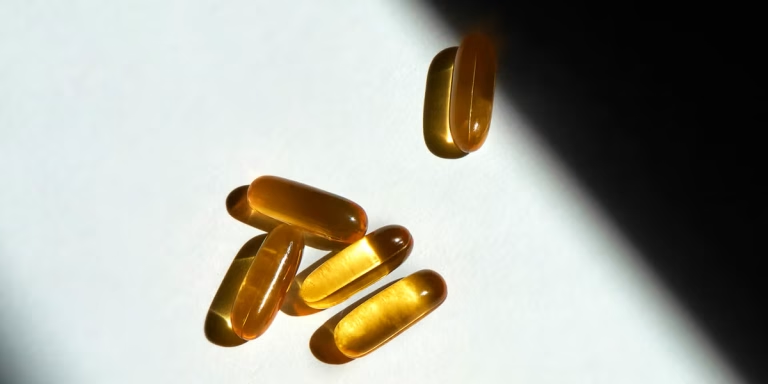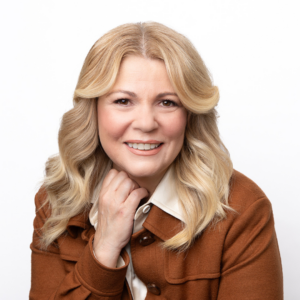Excerpt from BLOOD by Dr. Jen Gunter
Health21.03.2024

Excerpted from BLOOD by Dr. Jen Gunter. Copyright © 2024 Dr. Jen Gunter. Published by Random House Canada, a division of Penguin Random House Canada Limited. Reproduced by arrangement with the Publisher. All rights reserved.
The menstrual cycle is the wheel that drives humanity
Evolution demands that all species solve the equation of converting energy from the world around them into the next generation. Living things, from bacteria to blue whales, solve this equation in different and often ingenious ways based on their biology, environmental pressures, the care required for offspring to reach maturity, and even social structure. For example, some organisms reproduce asexually, some deposit unfertilized eggs that will hopefully get fertilized, and some have very long gestations, like an elephant, which carries its calf—which will ultimately weigh approximately 110 kg (243 pounds) at birth—for twenty-two months.
Reproducing a human is a massive biological effort. Energy-wise, it’s on par with the limits of the most extreme sports, for example, running 5,000 km (3,000 miles) over 120 days or cycling the Tour de France. Walking upright—being bipedal—results in a relatively smaller pelvis, which makes for a physically challenging and sometimes physically traumatic delivery, considering the relatively large head of a human fetus. Human infants are relatively helpless, a phenomenon known as secondary altriciality, so they require a significant amount of care, including breastfeeding, which is also metabolically demanding, and our ancestors had no choice but to pay this metabolic price and provide that physical care.
For humans, the platform that orchestrates turning this energy into offspring is the menstrual cycle, a unique trait seen in only a few species. To make human reproduction work, half the population needs to have a highly specialized biology that can be, repeatedly, hormonally rewired for a potential pregnancy, as well as bleed hundreds of times and each time repair itself without scar tissue. And while biologically this is an evolutionary marvel, it’s also a source of aggravation, pain, and suffering for many, because retrofitting a body for a potential pregnancy and then bleeding for several days four hundred or so times over a lifetime can have medical consequences. At times it can be a faulty system, but individual discomfort or injury isn’t evolution’s concern, and in fact, evolution’s motto might be best summed up as “good enough.”
Unfortunately, instead of a world where those who bear the physical burdens of reproduction—whether they reproduce or not—have equal footing, we have the opposite. The Ancient Greeks, the originators of Western medicine, labeled the female body as inferior, and the act of menstruation has been viewed as proof that women have troublesome physiology and are by nature dirty and toxic. Many religions and cultures have long carried that same torch based on the erroneous belief of impurity and the idea that menstrual blood is filthy and contains actual toxins that poison the body (and especially men, if they were to touch it). Women have been banned from places of worship, from preparing food, from having sex, and even from their own homes based on the supposed polluting powers of menstrual blood. And lest we think that was the medicine of yore, there was more than one letter published in 1974 in The Lancet, a leading medical journal, hypothesizing that there might be sound medical beliefs to support the notion that menstrual blood was toxic and that menstruating women could wilt flowers. I know, 1974!
I just can’t get my head around the concept of believing that menstruating women could wilt plants. If this were true, it wouldn’t be a curse; it would be a weapon. After all, if they could, wouldn’t they have used that power to lay waste to entire crops, bringing kings, emperors, and governments to their knees? Yet the fact that no woman has ever done this, or even used magical plant-wilting abilities to own a little land of her own, was not proof enough of its absurdity. But that is the patriarchy: facts are irrelevant; it’s the world order that matters.
As women were long viewed as lesser and more troublesome versions of men, the idea that their differences might be important and might warrant specific study to offer them better care was largely absent from medicine. What happened instead was that medicine was created for men and then retrofitted poorly for women. For many years, studying the reproductive tract mattered mostly for improving pregnancy outcomes, rather than improving the lives of those who lived with those reproductive tracts. It wasn’t until 1993 (yes, 1993) that including women in medical studies became a requirement for government-funded research in the United States. And diseases unique to the reproductive biology attached to ovaries and a uterus are woefully underfunded compared with diseases that more commonly affect the other half of the population. We can blame medicine, and we should, but our governments provide the funding for much of this work.
The practice of viewing female physiology as both toxic and lesser throughout the ages has left a damaging legacy of inadequate research, dismissal by a patriarchal medical system, an uncaring society, and insufficient education about how the female body works. The consequences are that people struggle to get care, and the gaps in medicine are subsequently exploited by a rogue’s gallery of medical charlatans from the wellness industrial complex. When I scroll Instagram or TikTok, I’m horrified at the disinformation about the menstrual cycle and associated medical conditions that is perpetually propagated. There are creators claiming that menstrual blood can tell you about hormone levels, or that a “normal” period is less than three days in length and painless, or that eating raw carrots daily is essential to detoxifying dangerous estrogens, or that menstrual blood can be used as a face mask to treat acne because it has stem cells and special “healing” chemicals. To someone who knows science, this all comes off as ignorance masquerading as confidence. Look: if menstrual blood had magical healing powers, the vagina and vulva would age at a slower rate, courtesy of four hundred or so regenerative “menstrual spa” therapies.
The truth is, many people haven’t received enough information to distinguish medicine from mythology, and disinformation is often simple and sexy, so it sells. Offering seemingly simple solutions is easy when you aren’t constrained by facts or the truth. And let’s be clear here: almost every claim offered by these menstrual charlatans is unstudied and unregulated, which is the antithesis of feminism. Feminism demands bodily autonomy, and that can be achieved only with facts. You cannot make an empowering decision about your health when the information you have been given is false. Lying about the body is a hallmark of the patriarchy, and no amount of wrapping it with a pink bow or abusing words like natural can change that fact.
The best strategy, whether it’s dealing with a dismissive medical provider or sorting through endless menstrual misinformation on Instagram or TikTok, is a robust education, and that is the purpose of this book. I want you to have a solid knowledge of the menstrual cycle and the medical conditions and therapies associated with that cycle so you can be empowered.









